The 50 States Project is a series of candid conversations with interior designers across the country about how they’ve built their businesses. This week, Oklahoma City–based designer Hannah Sutter tells us why she doesn’t want her firm locked into a certain aesthetic, why she still does all her own accounting, and how she motivates her team to bring in new clients.
You launched your firm in 2018. What made you feel ready to take that leap?
I went to Oklahoma State for interior design and then went to work for a well-established firm in the Oklahoma City metro area. I worked there for about five years, and it was a really good stepping stone, but wasn’t a good work environment [for me]. My husband had finished law school and started working for a firm, and had become more established [in his career]. We had also just fostered then adopted our oldest son, who is now 16, and I was ready to have a bit more flexibility with my work schedule. I’d asked for that at my other firm, and I knew it wasn’t going to happen, but I was so tired of the rat race—waking up, taking my son to school, working, picking him up from his aftercare, cooking dinner, homework and back to bed. In 2017, around Christmastime, my husband was like, “I think you should just go for it.”
Were you able to reclaim some of your time when you went out on your own?
Yes. I worked really hard from nine to three—a solid six hours—and that’s still what I do. I have three boys now, and it allows me to have balance and a good family life, which is one of the things I value the most about having my own thing. Now, do I still get calls from contractors at five o’clock? Sure. But I just tell them, “Hey, there’s going to be kids screaming in the background.”
What was that first big project that set you on the right path?
Truth be told, I feel like we just wrapped up our biggest one. We started it last year, and it was our first full-blown, every-nook-and-cranny-of-the-house sort of thing. It’s not that we didn’t have solid projects before that—we still have a really good clientele base—but this was our first really big one, and I’m so proud of it. They had a super healthy budget, wanted to start from scratch on everything, and gave us an insane amount of design freedom to just go for it. It was a really cool project—like, not-wanting-it-to-end type of good.
Does a job like that change what you’re looking for in future projects?
It can make everything else look ho-hum, but I think I have to step back and humble myself a little bit, because I know not every single client is going to be like that. But to know that they can be like this—I mean, if you would have asked me three or four years ago if we would have gotten this type of project, I would have been like, “What?” I am extremely grateful for the opportunity to be able to knock out something like that.
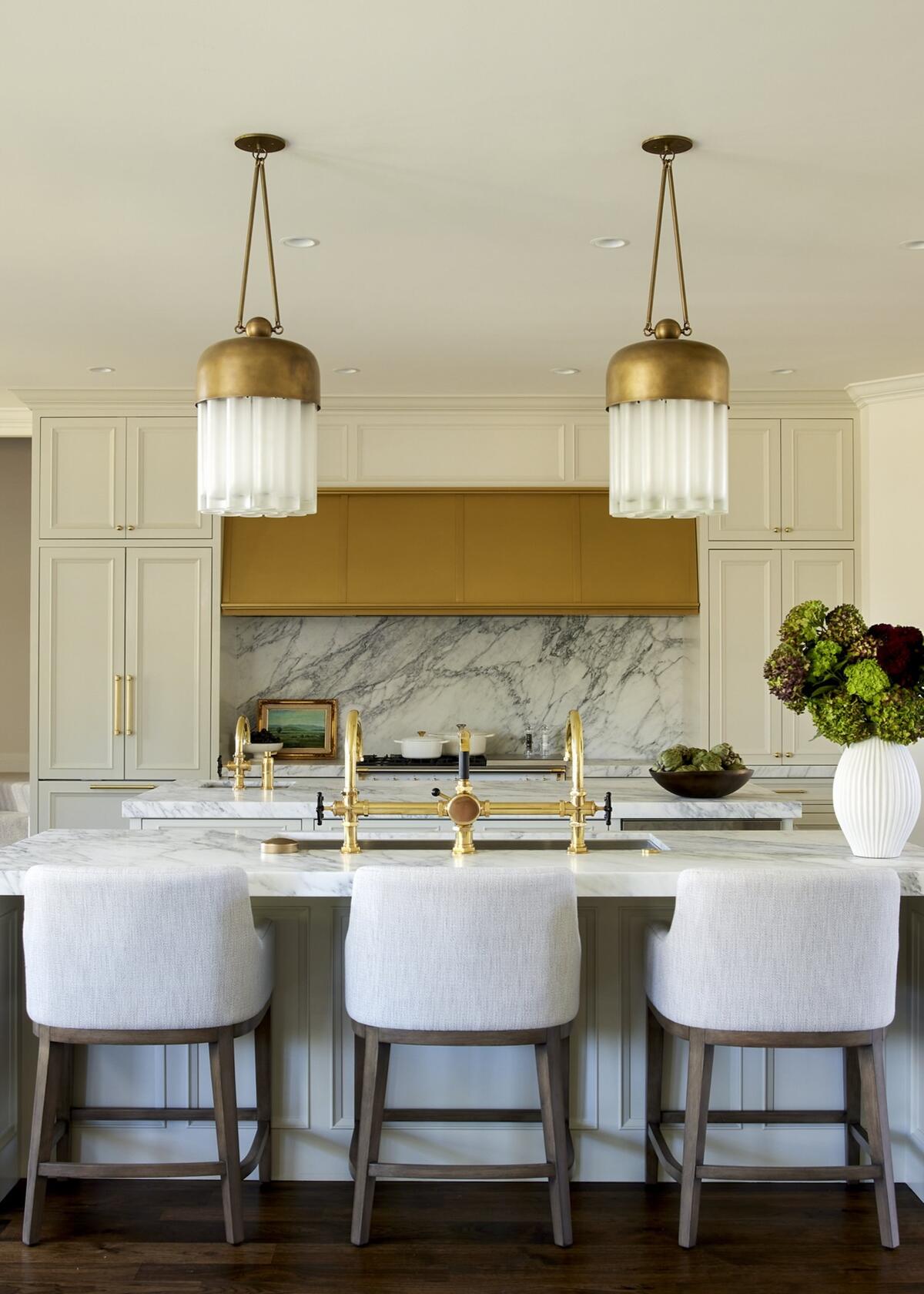
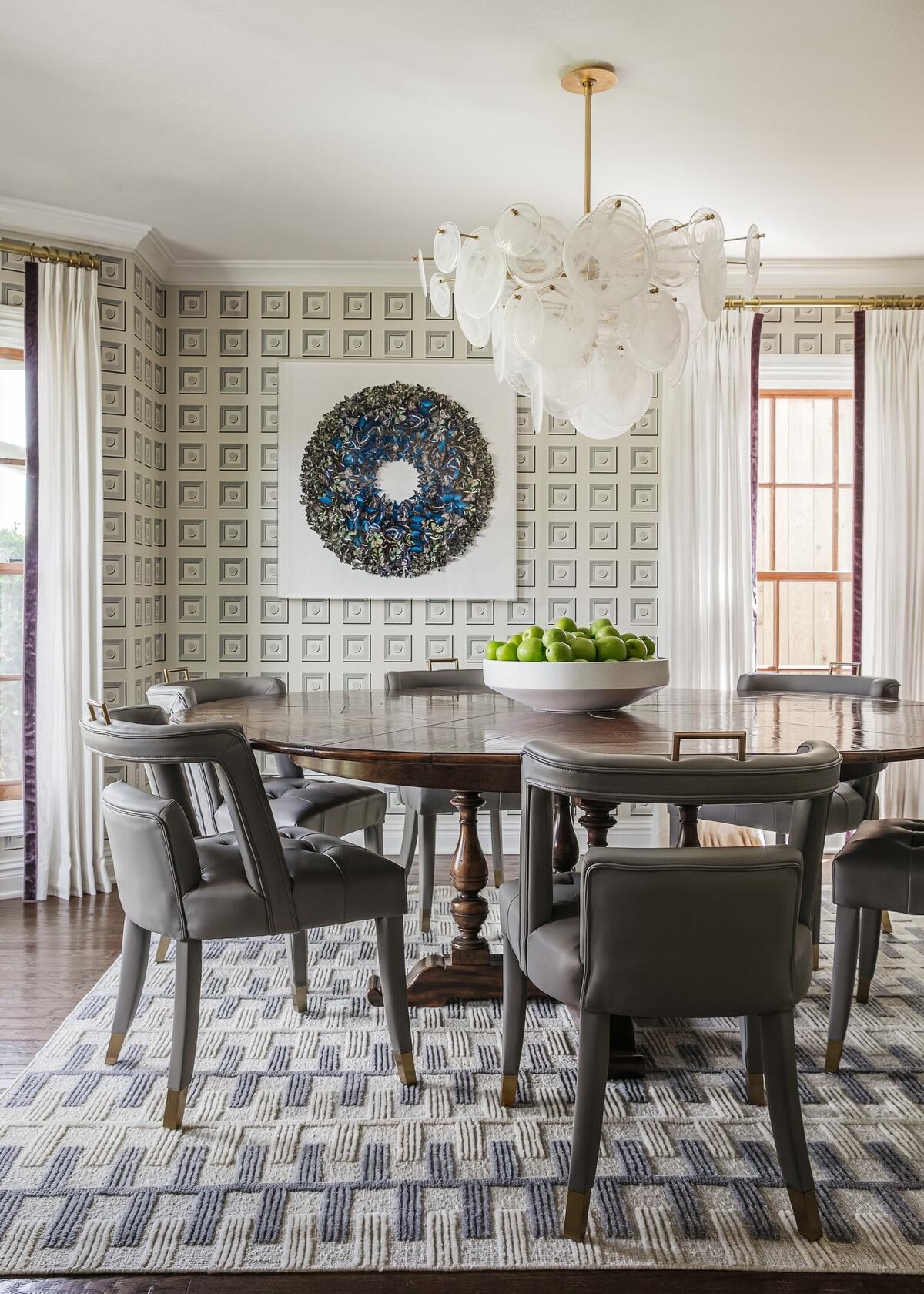
How has your business grown and evolved in the past six years?
I started the business in my upstairs bedroom. Then I had this young woman who begged to be a summer intern—she was like, “I don’t have to be paid.” She just wanted some experience. She even drove from 45 minutes away every day. And I quickly saw how nice it was to have an extra pair of hands for running errands and taking care of tedious things. When she went back to school, I started to feel like I needed to hire someone [to get my time back].
One of my good family friends had gone out to L.A. and it just didn’t hit right for him, so he came back to town and wasn’t really sure what to do. He didn’t go to school for design, but he always had a really good eye, so I gave him a little design challenge and was like, “Put this together in a week, and if you do a good job, I’ll hire you.” He worked for me for about two and a half years. But he’s also the type that’s very driven and wants to do his own thing, so I eventually pushed him out of the nest and was like, “I think you just need to go for it.”
In that time, though, I had hired Kellie, who is still with me. We had worked together at the same firm, and she was ready to get out as well—she’s been with me for five and a half years now. And then I hired Sarah in 2022. She had worked for Jennifer Welch, who’s a more famous designer here, but had quit because she needed something with more flexibility. I pay by the hour, which fit perfectly with what she needed, and the knowledge she brought was amazing. And then Libby is our latest addition—she came about six months after Sarah. She started as a summer intern and then never left, and now she’s full-time.
Are there more hires in the cards for the firm?
I’m extremely cautious about growing—whether it’s hiring or moving spaces—because I’ve seen it backfire and how it can get really uncomfortable financially. I always say, “You don’t build the church for Easter Sunday.” And sometimes, that’s going to mean being too crowded in a space or having too much to do. For now, I feel really good with the four of us.
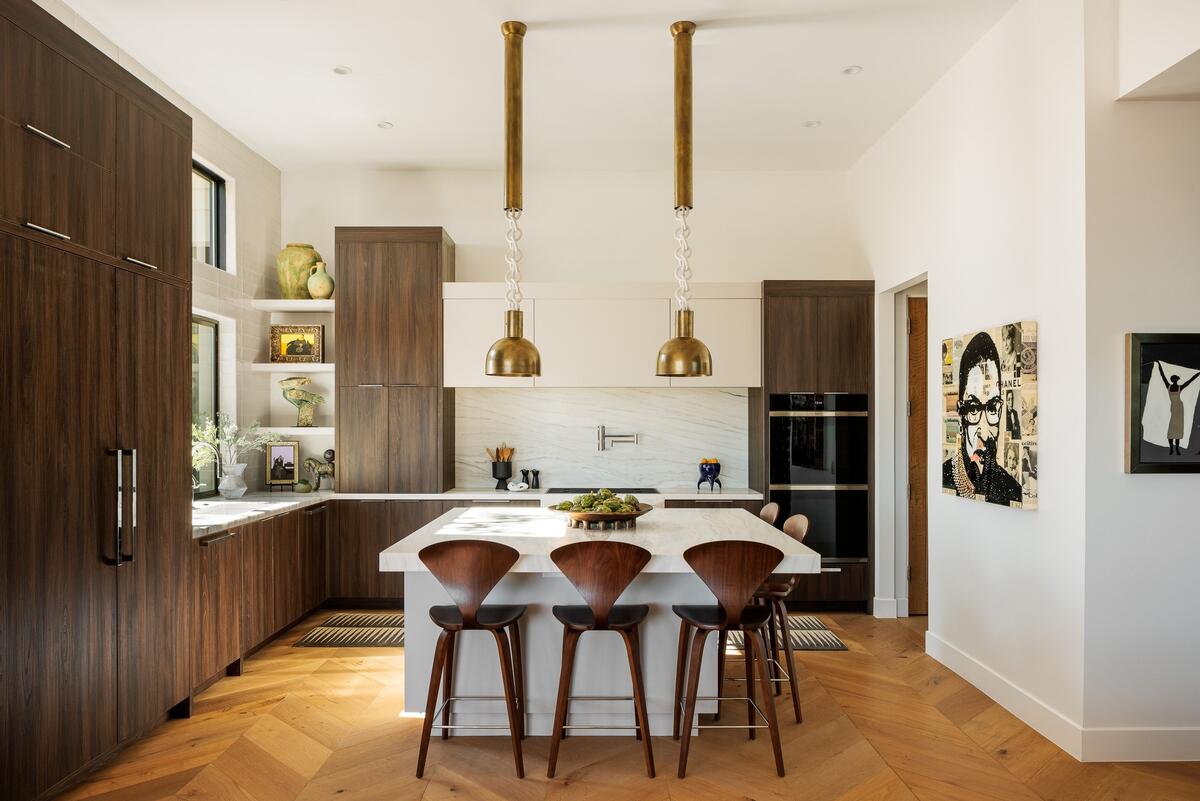
How have you approached charging for your work?
I don’t have someone who runs my financials—I still do everything myself—so it is a lot to track your time for every client and then invoice for all of that too. It’s just a time sucker. So I try to do as many set fees as I can, especially whenever we do something like a full-blown kitchen remodel or a living room furniture design package, and we include one round of revisions, which need to be made within two weeks. That way, clients know ahead of time what they’re paying for the design, which helps clear up a lot of anxiousness or any sort of hesitation they might have. We’ve hardly had anyone go over on revisions—and if they did need to do an extra round, we just shift to our hourly rate, and it wouldn’t be very many hours. It’s easier for me billing-wise, too, because I send out that set fee as soon as we present.
Once the design has been presented, we go into project management. That’s all by the hour, because you never know—some contractors are really good at following design packages and others need a little extra tender loving care.
Is that a different hourly rate than the design work?
No, because I feel like it’s just as crucial. Making sure the tile installer gets the grout joint spacing correct is just as important as picking out the tile, and it requires that same level of expertise, in my opinion. Even something like ordering product—I mean, everything just has to be absolutely perfect.
We also charge a markup on all of our products if we can. My team gets a cut of anything that they sell—it doesn’t all go directly to the firm.
That’s really interesting. Tell me about that.
Well, I feel like it should give them an incentive, right? They have a base pay rate, but then if they sell product, they get a cut of what we make. Similarly, if they bring a client to the firm, they’re paid double their hourly rate, and their percentage goes up on the cut of whatever they sell as well. I felt like they should be rewarded for bringing people in. It’s not a requirement by any means—it should solely be my job to do that—but if they do it, great. And then if they’ve hit a certain number in markup, their cut increases as well. So if they bring in $75,000 for the firm, then they get 15 percent of whatever they bring in. But if it goes up to $125,000, their cut bumps up to 18 percent—just percentage increases to encourage them.
Are your team members running their own jobs, then? Or how do you navigate where each of their roles starts and stops, and where yours begins on a given project?
I assign every client to one of our designers, and they handle the project all the way through. I’ve found that to be the best way to go about it, rather than having a project manager and a designer. There’s just so much information that goes into what we do, and so many details, so this helps get rid of that gray area or some of those gaps [between team members]. It’s also nice to be able to see a project all the way through—to be there plugging in lamps at the end and see something finished.
I’m very hands-on with each project. Occasionally, I’ll take on one or two by myself if we just need an extra hand to knock things out, but right now I mainly oversee everything. I weigh in heavily with [design direction] and get them going as far as selections go, but they do all the legwork.
Where do clients see you and where do they see your team? Was that something you ever worried about?
Once I’ve assigned the project to a designer, we both go for that first consult meeting to make sure we’re a good fit with that client, and then I’ll shoot them a proposal. And then that’s [the designer the client] sees throughout the whole project. I think that’s very important—I mean, that’s why I hired [my staff]. They’re so involved, and the face of everything. It’s not like they put [the design] together and then I present what they did.
So many designers I talk to are afraid of sharing that client relationship or empowering their team members to be involved in that way.
I don’t understand why you would want to be guarded about it. Maybe that’s the question: Why would you be opposed to it? I feel like if the client knows that they have a team taking care of their house versus one person, that should be a benefit, right?
We have a handful of clients who are like, “Where’s Hannah?” if I don’t show up for an install or something. But they’re not hiring me, they’re hiring the firm—and I have worked really hard to establish an experienced, hands-on team that provides exactly the same amount of customer service that I would provide. So I just don’t see the difference.
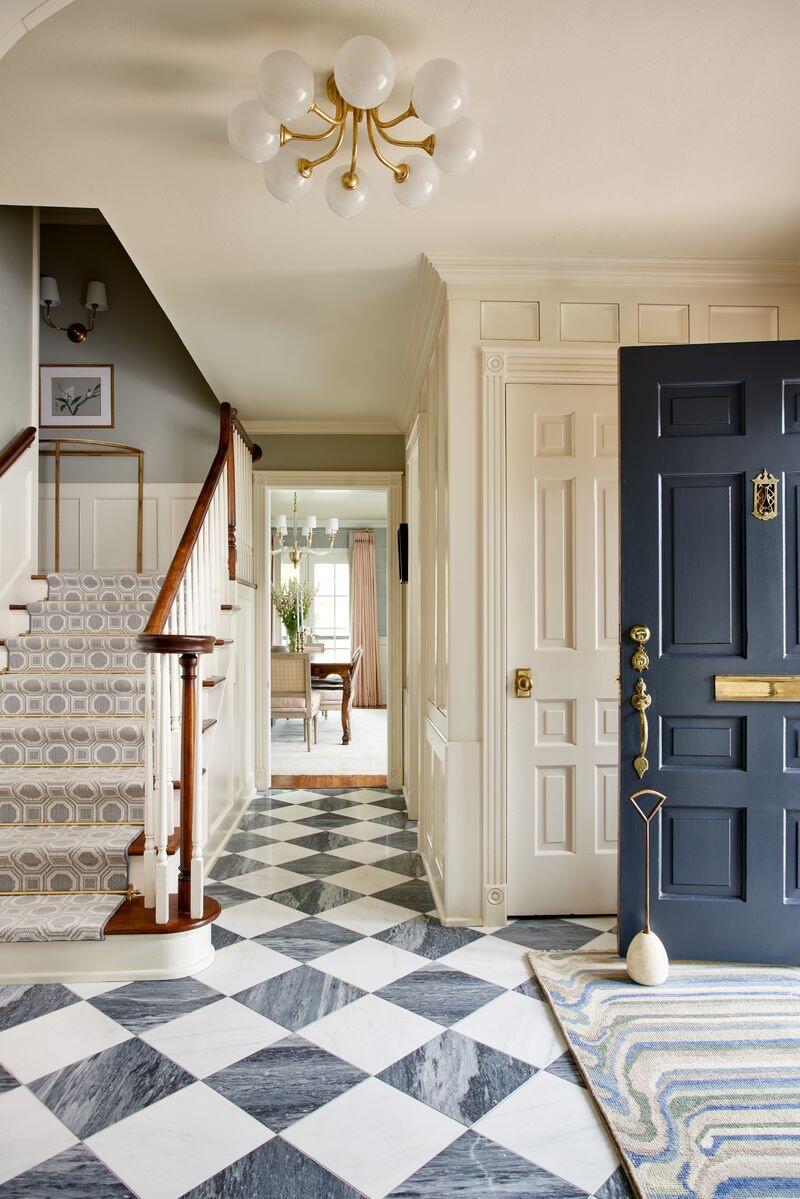
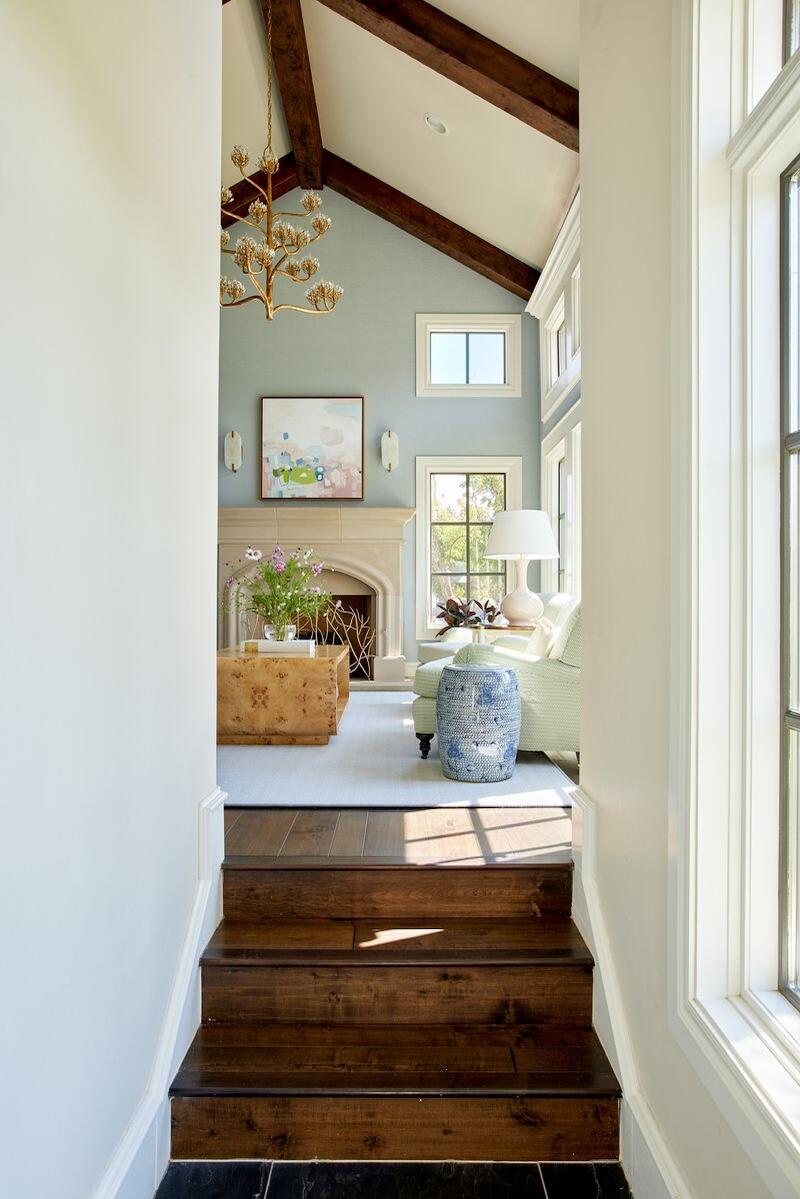
When you think about what your firm will look like in five or 10 years, what are your goals?
Man, that’s a good question. I feel like my business coach has asked me that a handful of times, but I just don’t know. Obviously I hope we keep getting bigger and better projects—we recently just got our first international project, in Denmark, so that’s been cool and exciting.
Wait, what?
I know! We present to the client next week. Let me tell you, it’s been a challenge with all the conversions to the metric system. But we’ve also had a ton of clients in California, Chicago, Kansas City—it’s been cool getting to have more and more projects outside of Oklahoma. At the end of the day, there are people in Oklahoma who have exorbitant amounts of money, but we’re a conservative state: [Our wealthiest clients] say no to things that even I can afford. I feel like the way people spend money outside of Oklahoma is just so different, and we’re able to make a larger profit on our projects. So I would like to be able to get more out-of-state projects to be able to grow.
It’d be great to eventually have maybe one or two more employees if the work allows it. But I feel really good with where we are right now.
Can you tell me a little bit about the local design scene?
It’s a little bit split: There are a handful of firms that solely and specifically do a lot of new home builds, and the majority of those are on the outskirts of Oklahoma City. Their style is often still very much the Studio McGee vibe, and they nail it—they do a great job at providing for those clients. That is not our firm. But there are three or four other firms I could name off the top of my head that are a lot more like us, working with a much more luxury clientele. More old money, if you will, versus new money—and there’s such a difference between what those two look like client-wise, in terms of knowing the value of spending more on fabrics and drapery. Those are the types of clients who don’t necessarily question why things cost what they cost, because they grew up with that and they understand the value of anything that we source.
Was it obvious to you that you wanted to be in that luxury niche from the beginning?
No, not necessarily. That was just part of learning the business. When you’re doing new home builds, you’re not always able to make a huge profit, especially because you’re not necessarily selling a lot of product. Maybe you could charge more for your time, but at the end of the day, it’s usually the builder purchasing all the hard finish materials. You might get to provide lighting, or maybe wallpaper and hardware, but that’s about it. So it’s not that we mind doing it—I think there’s still a lot of creativity in working on those types of projects and making them unique—but it definitely has to be a pretty specific project.
Here in Oklahoma, we also have the McMansions. The [cost of] real estate here has gone up so much recently, but even five years ago, you could build a 5,000- or 6,000-square-foot house for under a million, easily—with a pool! To do that, maybe the finishes on the inside were very cost-effective. But for our firm, even the remodels we’re working on, everything is extremely high-end. [That approach is never] going to be the most cost-effective option.
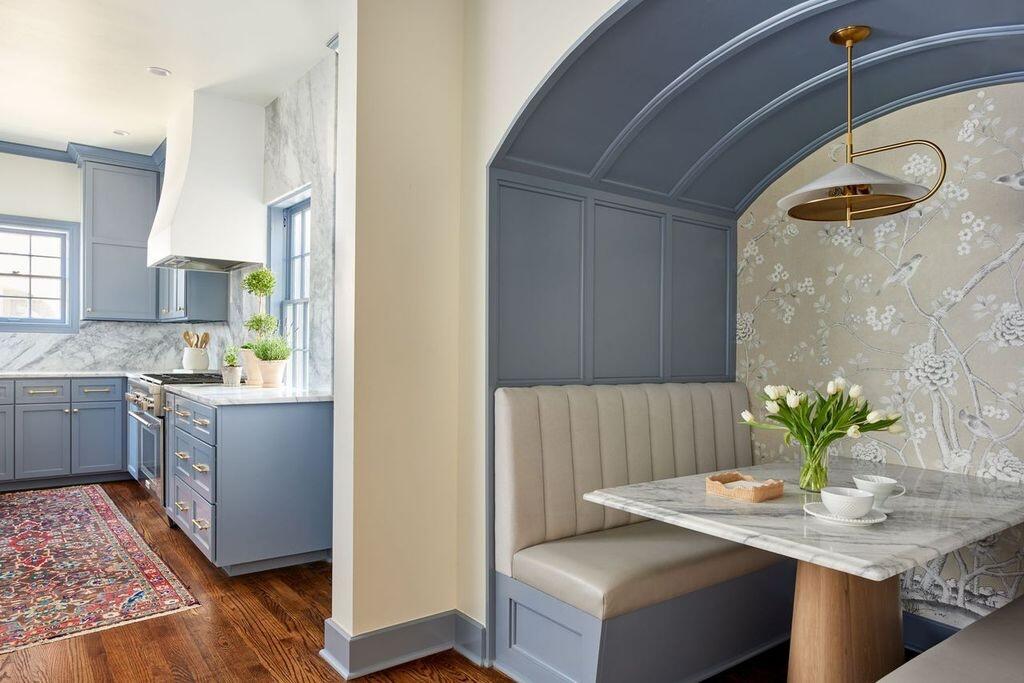
How does that impact the projects you say yes to, and how are you vetting incoming client inquiries?
That’s a great question. We were in a phase where we had become more known, so we were getting calls left and right. But so many of the people calling had no clue what it costs to remodel—let alone to furnish a space at the quality and level that we provide. We put together our proposal, and sometimes I like to just go ahead and toss out some rough ballpark numbers, like, “If we’re going to furnish your living room, it’s going to be from this amount to this amount.” If that spooks them, I’d rather them tell us now.
One thing that has helped tremendously is updating our inquiry form online. There are now a handful of questions that ask about budget. Having some of those questions answered upfront has helped us narrow down our clientele. Every now and then we’ll still do a nursery with a $25,000 budget, but generally an out-of-state client needs to have a budget of over $200,000 for us to take them on.
Does that mean you’re saying yes to less?
It does. It was a bit of a shift, because we’re not as busy, which is kind of a head adjustment. But now every client that we do have is great. They’re also profitable and a good addition to our portfolio.
How many projects does that mean you’re taking on now?
Before, I feel like we were hitting around like 30 ongoing projects—anything from a full-blown remodel to helping a client’s mother-in-law get some curtains in her primary bedroom. And it’s hard because some of those are still profitable for us as a firm, but they’re time suckers too, and those hours could be spent working on bigger projects. Now we’ve got about 10 to 15; in a perfect world, I’d love to work on 6 to 8 massive projects a year.
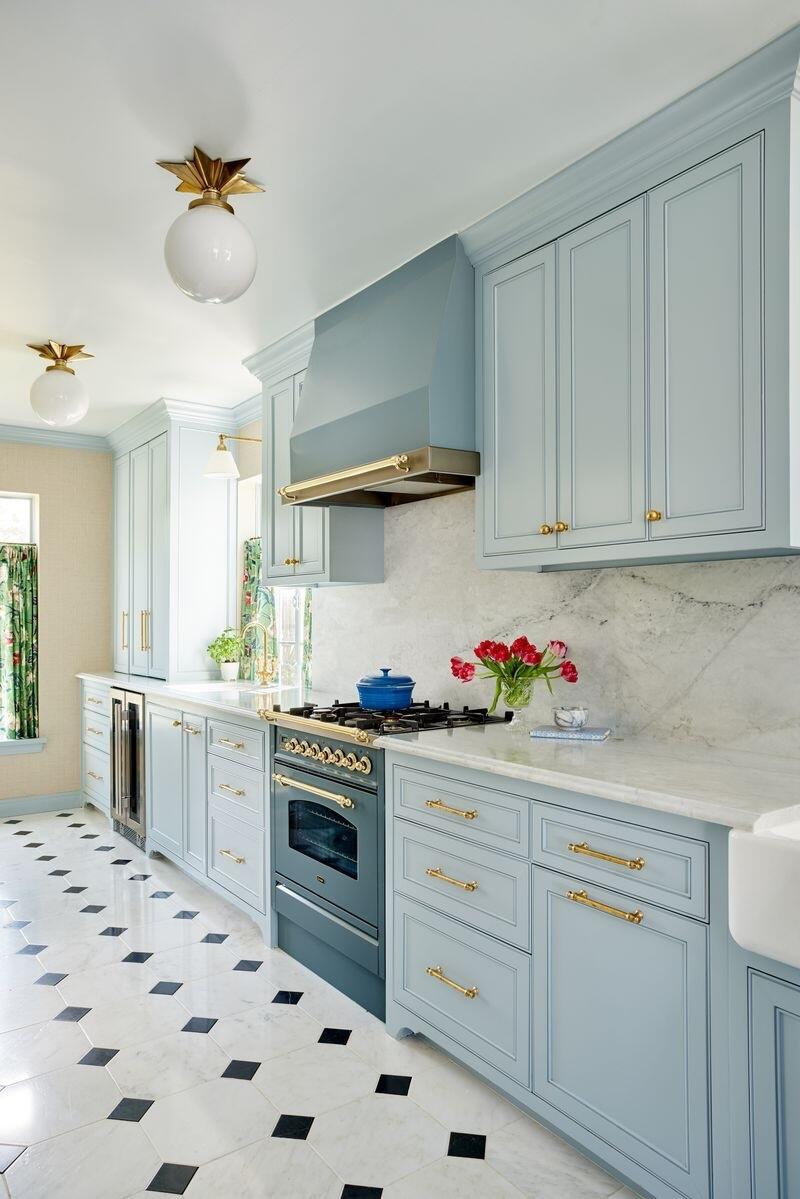
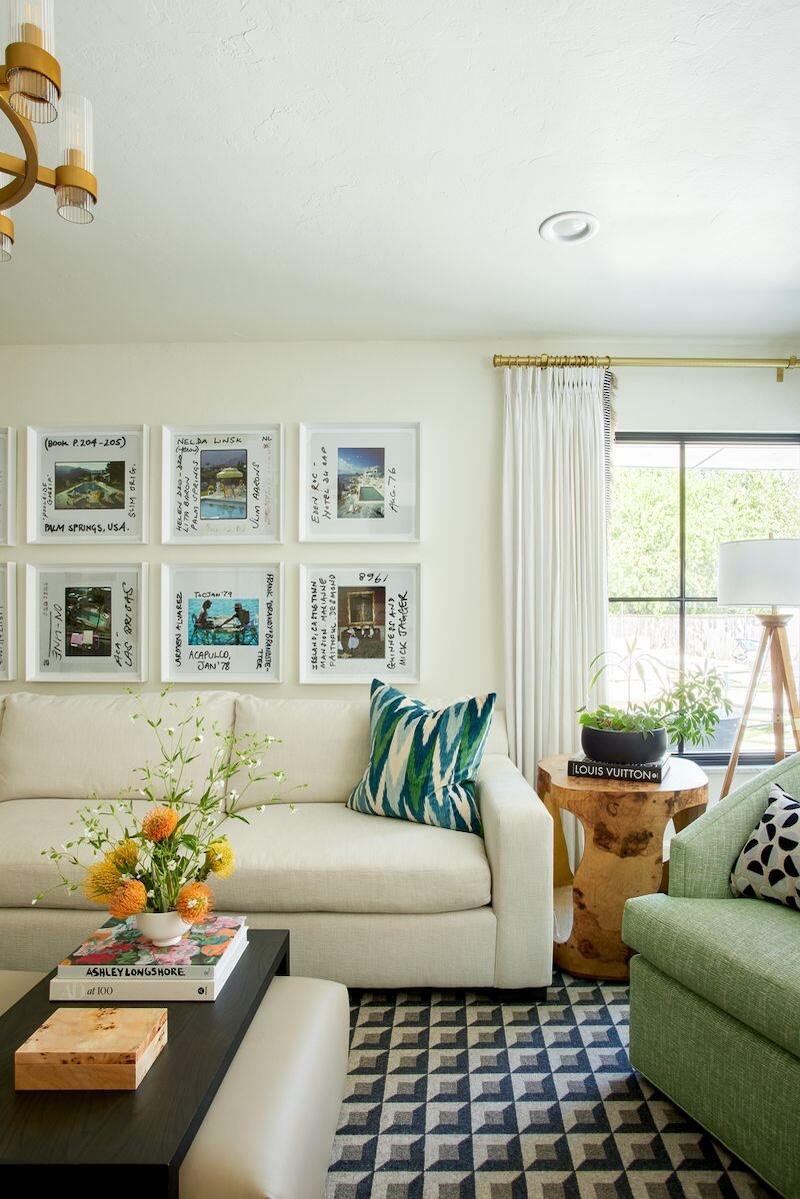
Do the aesthetic inclinations of a client impact what you say yes to?
I don’t know. There are certain designers who have a very specific look, and I don’t know if we necessarily sit within that realm, because we don’t necessarily push our personal aesthetic. We try to listen to what the client wants, and what they need the most, and we go from there. I do feel like we’re pretty colorful and classic, with a bright, traditional sort of vibe.
Do you want a signature look?
I don’t think so. If you think of some of the extremely famous people who have partnered with Target or have TV shows, it seems like their signature look gets popular, then starts to seem on its way out after a certain amount of time. You reach a point where you’ve got to keep evolving. So in that regard, I’d rather stick with what’s classic and traditional, but in a refreshed way. That’s what we’ve had good luck with. We try not to do things that are so trendy.
How did you start to find your vendors and make those relationships?
A lot of vendors have found us, which is nice. Especially on Instagram, there are a lot of boutiques that reach out because they are trying to sell their wallpaper or fabrics. Of course, there are a bunch of super well-known companies that every designer uses, and we absolutely love them, but I’m also consistently on the hunt for some of those smaller boutique lines too, with things that are a little bit more unrecognizable. I think that’s still extremely valuable.
There’s a new mini-district in OKC where we have a Visual Comfort lighting showroom, a Farrow & Ball, and a hardware store. Those have been nice to work with. Otherwise, as far as the local scene, our closest design district is Dallas. That’s a three-hour drive for us. And it’s hard—I mean, I have to figure out childcare if I want to do a day trip. I know a lot of our reps, and they’ll come to OKC to show us all the new things. We have a great library in our studio. But there are still days where we’re sourcing and I wish that we could just run somewhere to see [something in person]. For us, there’s a little bit of [a built-in] time lapse [to account for], because you have to jump online and order samples.

What does success mean to you in your business today?
Oh, that is a heavy question. For me, success is being able to establish significant relationships and have a really good standing with the city—to have our firm be well-respected. It’s also about being able to co-create with the team that we have right now. Success is having employees who want to come to work every single day, and not just because they have to, but because they really want to. Establishing that type of love and acceptance for each person is so important to me. Being able to say, “I did this house”—yes, that is really cool, but the relationships outweigh that for me.
To learn more about Hannah Sutter, visit her website or find her on Instagram.





























